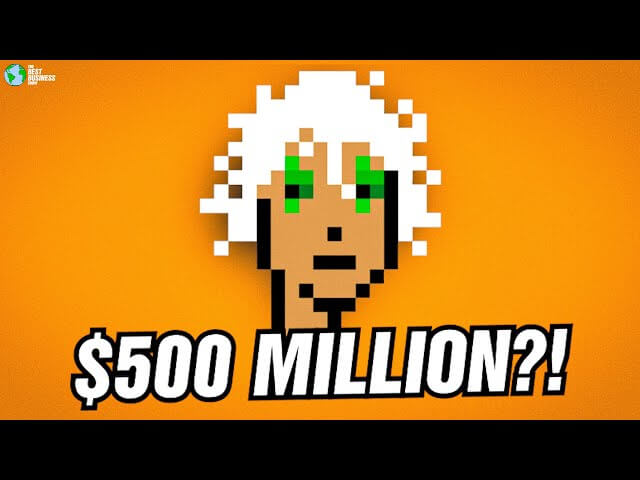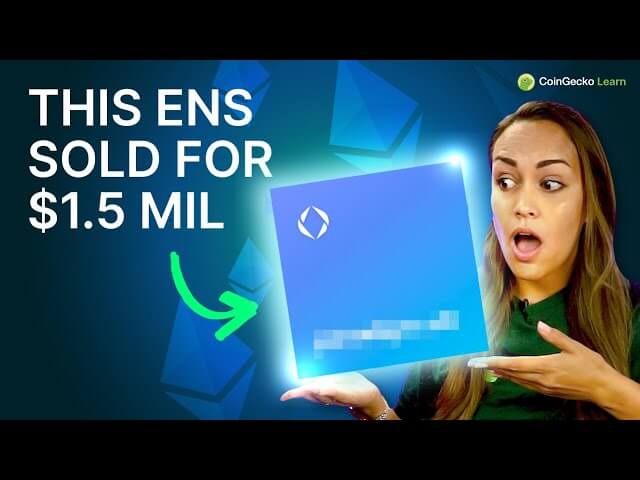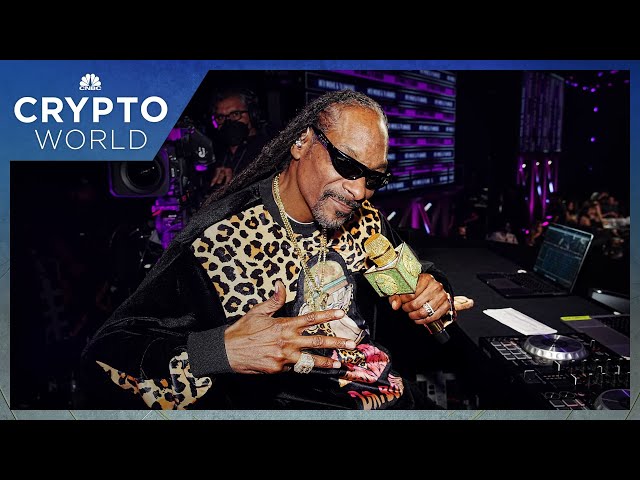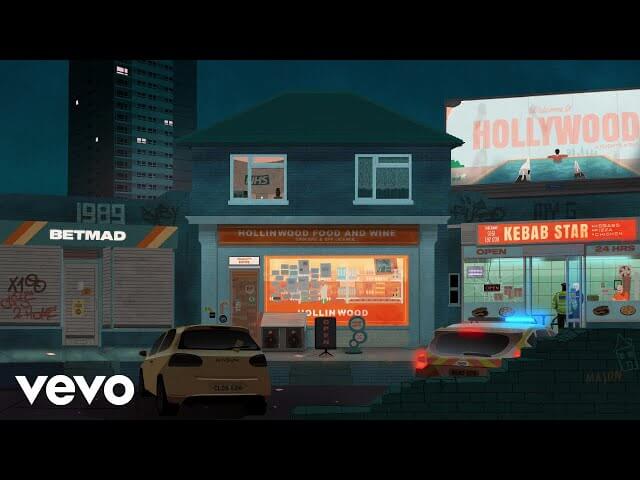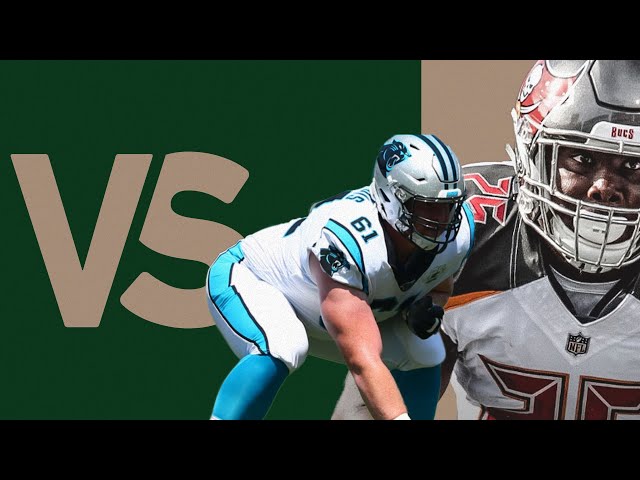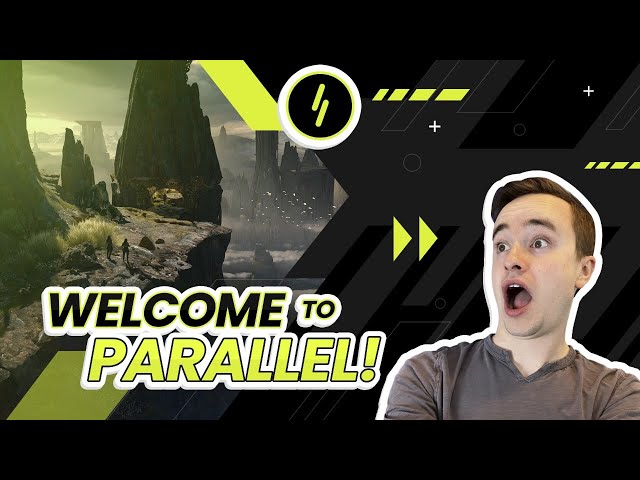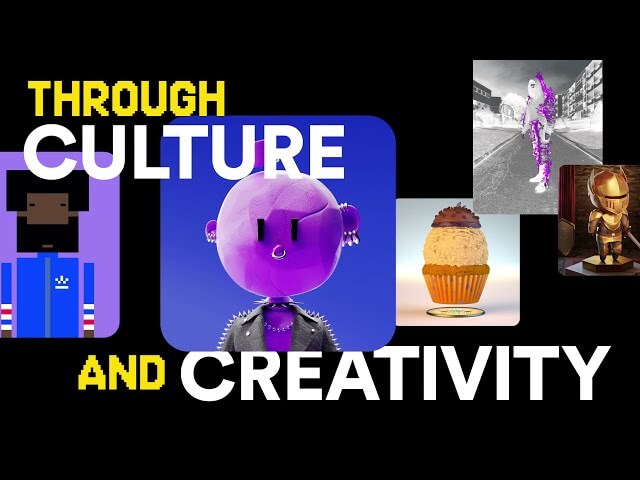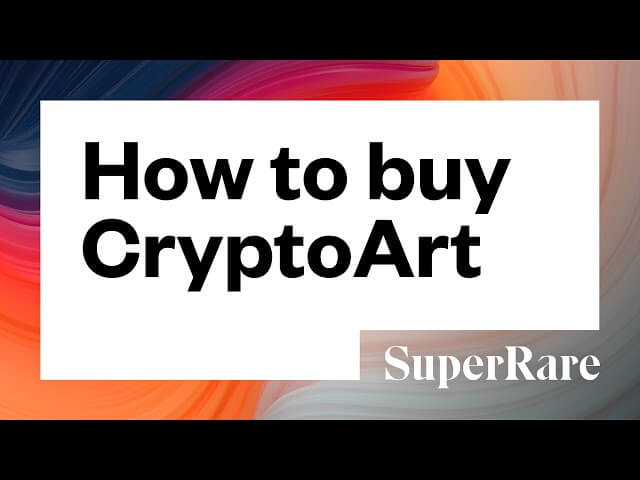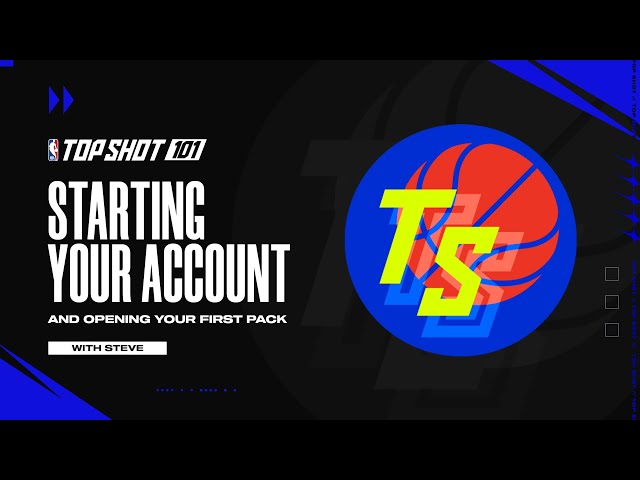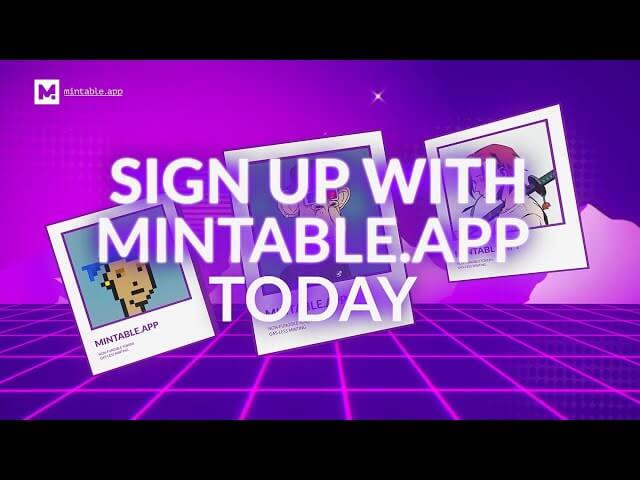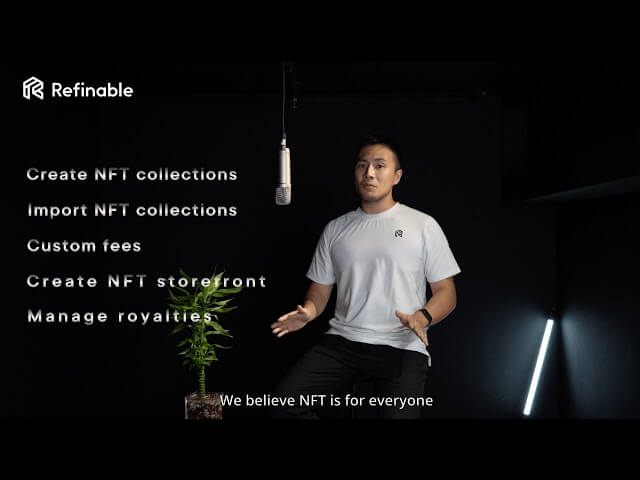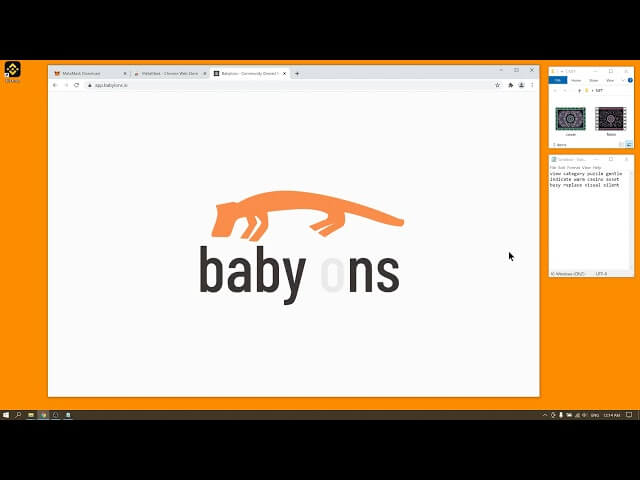NFTs
Everything You Need to Know About Non-Fungible TokensWant to become a NFT expert in minutes? Read our simple guide to non-fungible tokens to learn why this crypto technology is changing the world, and opening up the possibilities of true digital ownership. We’ll explain how NFTs work, what types are available, and where you can buy and trade them.
What are NFTs?
NFT stands for non-fungible token. They are digital assets that, unlike cryptocurrencies, can’t be divided into smaller parts. Each NFT is a distinct, unique digital entity – whether that’s a piece of art, a video, a music track, a book, a personal identity, a membership profile, or some other non-divisible digital package of information.
Like fungible cryptocurrencies, NFTs utilise decentralised blockchain technology and smart contracts to maintain an immutable record of ownership. One of the most common blockchains for NFT projects is Ethereum, though others including Cardano and Solana are also becoming popular.
Types of NFTs
The possible use cases for NFTs are virtually endless, but below we’ll look at a few of the most common.

Art and Collectible NFTs
When most people think of NFTs, they immediately think of digital art, especially high-profile projects like CryptoPunks and Bored Ape Yacht Club. This is probably because there have been so many stories about them in the mainstream media – particularly about the incredible prices some have sold for.
But, beyond the hype, NFT technology is indeed revolutionising the art industry at all levels. Some of the advantages NFTs provide are:
- Enabling artists to efficiently protect their intellectual property rights
- Allowing art collectors and dealers to authenticate personal property ownership history of both digital and physical artworks
- Making permissionless digital sales quick and easy
- Giving artists the ability to add extra digital features to both digital and physical artworks
Let’s take a closer look at some of the most popular art NFT projects:
CryptoPunks
Launched in 2017 by Larva Labs Studio (now owned by Yuga Labs), CryptoPunks consists of a set of 10,000 pixel-style digital artworks of, well, punks. The project is based on the Ethereum blockchain. Each CryptoPunk has a unique combination of character type (human, zombie, ape, and alien) and various attributes (87 in total, including things like messy hair, a shadow beard, regular shades, peak spike, gold chain etc).
CryptoPunks are generally considered to have kicked off the NFT craze in 2021, which also included other early NFT projects like CryptoKitties, and Bored Ape Yacht Club. CryptoPunks have been auctioned Christie’s of London, and featured at Art|Basel Miami. Sotheby’s was set to auction a lot of 104 CryptoPunks in early 2022, but the seller pulled the plug minutes before it was set to commence.
As CryptoPunks began selling for big money, some people suspected that some transactions were being used in scams and to launder money. One of the most controversial episodes in CryptoPunk history took place in October 2021, when CryptoPunk #9998 appeared to sell for US$532 million. However, the transaction was later invalidated, when Lava Labs revealed the NFT owner had bought it from themselves, using a flash loan which has been taken out and paid back with a single blockchain transaction.
Bored Ape Yacht Club (BAYC)
Another high-profile NFT art project is Bored Ape Yacht Club. It was launched by Yuga Labs in April 2021 and was instrumental in fueling the NFT hype of 2021-22.
Like CryptoPunks, it consists of 10,000 unique NFTs based on the Ethereum blockchain. However, in addition to a unique piece of digital art, a BAYC NFT also serves as a Yacht Club membership card. Initially this gave holders access to THE BATHROOM, a collaborative graffiti board, though other areas of the club are also laid out in a roadmap.
Bored Apes themselves are cartoon-style artworks, each with a unique combination of traits (there are 172 different traits). Interestingly, unlike most other NFT artworks, Yuga Labs has confirmed that owners of a specific Ape also have full commercial rights to that NFT – so they can capitalise on it in any way they want. At the time of writing, the most expensive Bored Ape was #8817, which sold for US$3.4 million at Sotheby’s.
Moonbirds
In April 2022, Moonbirds took flight on the Ethereum blockchain, and quickly became a global hit, with US$290 million worth selling in the first four days. Like CryptoPunks, each moonbird (which is a type of owl) is a unique pixel-style artwork with various combinations of traits, and there are 10,000 NFTs in total. Like Bored Apes, each Moonbord NFT also gives the holder access to a private membership club. However, unlike Bored Apes, the longer someone holds, or ‘nests’, a Moonbird, the more benefits they will get.
Initially, holders of Moonbird NFTs were also granted full intellectual property rights to exploit their unique image – including the ability to create products, services, merch and more. However, after five months, the project controversially announced it was changing that agreement, and moving to CC0 – something that stripped owners of the ability to fully exploit their Moonbirds commercially. Needless to say, this didn’t go down well with many in the Moonbirds community who’d paid top dollar for an NFT that included full rights.
Domain Name NFTs

As the world transitions from Web2 to Web3, and our digital identities become ever more important, some projects are exploring using NFTs to provide an efficient solution to domain ownership. Put simply, instead of the traditional way of administering web extensions (like .com, .info, .io etc.) through third parties, NFT domains are stored as smart contracts on blockchains like Ethereum and Polygon. They are stored in their owners wallets, giving them true ownership and complete control.
What you can do with an NFT domain name:
- Create and host websites
- Replace your crypto wallet addresses with your domain name
- Login to web3 apps using your domain name
- Save money – once you have purchased your NFT domain name, you own it for life
Here are some of the most popular NFT domain name projects:
ENS: Ethereum Name Service
As the name suggests, ENS is based on the Ethereum blockchain, and is one of the most popular NFT domain name services. At the time of writing, prices were set at 0.0008 ETH for a domain name – the equivalent of just over one US dollar. Considering NFT domain names can be held for life, or sold on secondary markets, this makes them far more affordable than traditional domain name services.
Unstoppable Domains
Another popular NFT domain name service is Unstoppable Domains Inc. They offer NFT domain names based on both Ethereum and Polygon, and also sell a growing range of cute animal themed domains (for example, dappstork.crypto, sassyllama.crypto, minidolphin.crypto etc). Again, these can be kept for life or traded on secondary markets.

Music NFTs
Since the onset of online streaming, the music industry has been struggling to find a financially sustainable model. Indeed, although there are a few high-profile artists making millions, most musicians have been struggling to monetise their talent in a world where any music is available for either pennies, or totally for free. However, NFTs have opened up a new world of possibilities for musicians.
NFTs offer several benefits to musicians and music fans, including:
- Allowing musicians to combine music, visual and interactive elements into their creations
- Enabling musicians to create and sell directly to fans, cutting out exploitative middlemen like big record labels
- Making intellectual property rights management more efficient
- Allowing fans to become effective shareholders in creative projects – giving them something tangible they can keep or trade later
Some established legacy bands and artists have embraced NFTs recently, for example, Muse and Snoop Dogg, but so far it’s mainly emerging artists who’ve seen the potential, like British rapper Aitch.
Snoop Dogg
Iconic American rapper Snoop Dogg has long been enthusiastic about blockchain and emerging technologies, including licensing his brand for 10K next-generation metaverse avatars in The Sandbox. He’s also released a series of NFTs of his nineteenth studio album, B.O.D.R., and a larger series of NFTs created on Sound.
Muse
Legendary British rock band Muse made history in the UK charts in 2022, when Will of the People became the first NFT album to take the number one spot. In reality, of the 51,500 copies of the album sold in the week following release, only a small percentage were NFTs sold via Serenade – but still, it was a landmark for the music industry. The NFT version of Will of the People included a downloadable version of the album, along with alternative cover art and was digitally signed by the band.
Aitch
In 2022, upcoming British rapper Aitch also released two NFT collections to celebrate his debut album Close to Home. The NFTs were created in partnership with Web3 creative agency Soga World, and sold on the LimeWire marketplace. One collection consisted of individual mystery boxes, each of which contained one of 1,600 unique trading cards – which also gave owners the chance to win additional prizes. The other collection consisted of NFT artworks together with physical copies of the album.
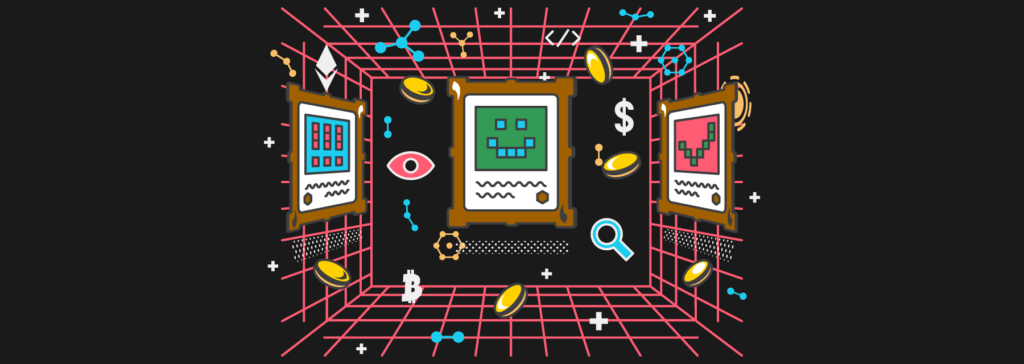
Photography NFTs
Since the beginning of the broadband internet age, photographers have suffered from a similar problem to musicians, i.e., it’s very difficult to share creations online while also maintaining effective control of ownership and rights. However, creating photography as NFTs can help overcome these problems, and, again as with music and art, allows creators to add extras. For photography buyers and collectors, the NFT format also makes storing, browsing, and displaying their collections much easier.
Some of the advantages afforded by NFTs to photographers and collectors include:
- Allowing photographers to create and sell unique works combining multiple elements, without the need for third parties like agents or galleries
- Enabling easier rights management
- Giving collectors provable ownership and the ability to trade their assets
Some interesting examples of photography NFT projects include the following:
Hidden Stories: Chapter One – Sight of Hand
A photography project centred around pictures of people’s hands. When people have purchased the original NFT photograph, they are encouraged to add their own ‘hidden story’ to it, via the blockchain and Hidden Stories contract. The idea is that, each time the NFT is sold, a new addition will be added, thus creating a continuously evolving photo story.
Kate Woodman
Photographer and artist Kate Woodman sold her first NFT, Always Coca Cola, for US$20,000 on Foundation. Although Woodman still retains full copyright ownership, the buyer also has the rights to sell the unique NFT piece, and every time the NFT changes hands, Woodman will also earn a royalty.
Dreamers Editions by Laurent Castellani
This collection is a good example of how a reasonably well known photographer is harnessing their online presence to sell work as NFTs to collectors, known as ‘dreamers.’ In this case there is nothing added to the photos – the photographer is just making use of the basic NFT properties to assign digital ownership.
Sports NFTs

When it comes to sports, the possibilities offered by NFT technology are particularly interesting. In addition to sports teams, organisations, and personalities being able to offer NFTs featuring artwork and interactive content, they can also be used to give holders access to exclusive events and venues.
Fan tokens are also similar to sports NFTs but we cover those in more detail in a dedicated section.
Sports NFTs can do the following:
- Held build fan engagement by giving holders access to exclusive events and venus
- Give fans the ability to become something of a shareholder in organisations, through buying and owning unique official digital assets, that are tradable
- Enable clubs and organisations of any size to reach out and connect directly with fans anywhere in the world
Some popular examples of sports NFTs are:
VaynerSports Pass VSP
Launched by AJ Vaynerchuk’s VaynerSports, The VaynerSports Pass is an NFT that gives holders ways to connect with athletes via private Discord channels, access to exclusive ticket raffles, AMAs with pro athletes, and IRL (in real life) and digital experiences with athletes. There are four tiers of passes, in several designs, with various specific attributes.
MLB Champions
This official Major League Baseball-licensed blockchain-based game can be played by anyone using their own crypto figures. These figures are Ethereum-based NFTs, portraying real baseball stars. Each MLB Champions game is tied to live MLB games in real-time, with players earning stats based on how they perform in the real game.
The Association
An official Ethereum-based collection from the NBA and NBPA, The Association features tens of thousands of dynamic NFTs, featuring real-life basketball players, that actually change appearance over time according to the performance of real players and teams on-court.

Trading Cards NFTs
Anyone who remembers physical trading cards (or still collects them), will appreciate how NFTs make the perfect format for digital versions. So, it shouldn’t be surprising to learn that many brands, famous and obscure, have launched NFT trading card collections.
NFTs are great for trading cards because they allow:
- Holders to authenticate their ownership
- People to trade with a truly global collector base
- Creators to add extra features, beyond just static visuals
- Cards to be designed to be used as part of blockchain-based games
- Collectors and traders to easily ascertain how rare and valuable a specific card is
Below, we’ll take a look at just a few of the popular NFT trading card projects:
Parallel Alpha
This is a good example of a more or less ‘traditional’ trading card collection in an NFT form. A vast science fiction blockchain-based game, playable with NFT cards, which each represent various pieces of tech, characters, or actions from five various factions.
Syltare
This blockchain-based card game centres around Ethereum NFT cards depicting legendary heroes from history and myth. Players earn SYL tokens in return for playing in tournaments and contributing to the Syltare ecosystem.
MetaBeasts
MetaBeasts is a play-to-earn blockchain-based trading and collecting card game, centred around Ethereum-based NFT cards. Season 1 featured 100 unique species and mythical elemental creatures from the fantasy world of New Eden. The NFTs have 6 tiers of rarity, 13 element types, 3 upgradable tiers, and 4 base game attributes.
Utility NFTs

In addition to art, music, sports collectibles, gaming and domain names, NFTs can also be used to manage a host of other membership services. The global nature of the marketplace, and ability to sell NFTs once someone no longer wants the benefits of a particular membership, also makes them more attractive than traditional membership models.
Drunken Monkey Members Club
Launched in April 2022, Drunken Monkey Members Club is set to offer a luxury global concierge service to NFT holders, via its members only app. Specifically, these services will include restaurant and bar reservations, private members clubs, hotel bookings, jet and yacht chartering, sporting event and concert tickets, and private events. The NFTs are also unique artworks in their own right and consist of 5,995 illustrations of, well, drunken monkeys.
Metaverse HQ
Launched in July 2021, Metaverse HQ refers to itself as “The IVY League of Web3”, and aims to provide its NFT holders with tools and strategies to “make profitable decisions” in the NFT space. Holders are provided with daily drop updates, end of day recaps, strategy write ups and in-depth articles. Interestingly, 20% of all sales are paid into a community fund which, it is claimed, will be used for the benefit of all members.
Travel Tiger Club by Travala.com
Popular hotel, flights and activities booking site Travala.com launched its Travel Tiger Club in early 2022. By purchasing a Travel Tiger NFT, which each feature unique tiger artworks, holders can unlock various travel-oriented benefits. These include bonuses, loyalty rewards, payment discounts, proof of travel NFTs, token airdrops, VIP concierge access, exclusive access to real world and metaverse events, and unique travel drops.
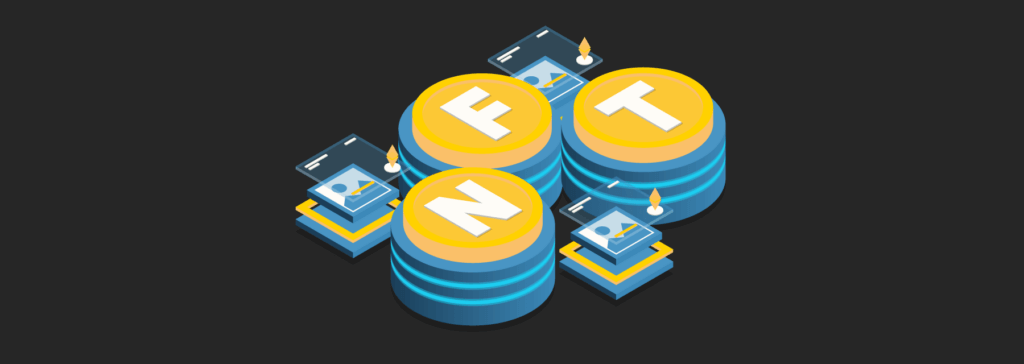
Virtual Worlds NFTs
NFTs are critical to the ecosystems of today’s metaverses – the many virtual worlds that are forming true digital economies and societies. In addition to being used to facilitate the ownership and trading of virtual real estate and objects, they can also be used to hold avatars and identities, and manage accesses and memberships.
The use of NFTs in virtual worlds is covered in more detail on our Metaverses page.
How to Buy, Trade and Use NFTs
NFTs are easy to find, buy and sell thanks to a growing number of dedicated NFT marketplaces. In this section, we’ll look at some of the most popular, and tell you everything you need to know about getting up and running.
OpenSea
The biggest NFT marketplace by volume, OpenSea.io is a vast treasure trove of Ethereum and Solana based non-fungible tokens, and is one of the easiest to use.
At OpenSea, you’ll find the following categories of NFT:
- Art
- Collectibles
- Domain Names
- Music
- Photography
- Sports
- Trading Cards
- Utility
- Virtual Worlds
You don’t open an account in the traditional way at OpenSea. Instead, you will need to connect a supported crypto wallet before you can create, buy or sell. OpenSea.io supports the following cryptocurrency wallets:
- MetaMask
- Coinbase Wallet
- WalletConnect
- Phantom (Solana)
- Glow (Solana)
- Fortmatic
- Kaikas
- Bitski
- Solflare (Solana)
- Venly
- Dapper
- Authereum
- Torus
- Portis
- OperaTouch
- Trust
If you don’t already have one of these crypto wallets, you can select one and follow the on-screen instructions to quickly set one up. You can also check out our dedicated crypto wallet review section to find out more. Once you have your wallet connected to OpenSea, you’ll be able to login to your account, set up a profile, and create, buy and sell NFTs.
To create an NFT, simply go to ‘Create’ and complete the details on the listing page – including options, traits and properties. OpenSea supports the following file types for NFTs:
- JPG
- PNG
- GIF
- SVG
- MP4
- WEBM
- WAV
- OGG
- GLB
- GLTF
Max file size per NFT is 100MB
Unlike some other NFT marketplaces, you don’t have to pay network fees to mint an NFT when you list it. You can create as many as you like, organise them into collections, and post them for sale (as fixed-price or auctions) for free, and only mint them on the blockchain and pay fees when you sell. You also have the option to set a creator fee as a percentage. If you do, you will get a commission every time an NFT you created is sold in the future.
Nifty Gateway
Another hugely popular NFT marketplace is Nifty Gateway, which is part of Gemini – the cryptocurrency exchange founded by Cameron and Tyler Winklevoss. The marketplace is geared to Ethereum-based NFTs and using your Gemini wallet, though it does also support Metamask.
Unlike most NFT marketplaces, Nifty Gateway is a custodial platform. This means the NFTs are stored in a secured Gemini-powered wallet, so you can buy, sell and gift NFTs without worrying about gas fees. It also means if you lose access to your account or forget your password, they can be recovered, and you can pay using debit or credit cards, your Gemini balance, or prepaid ETH. However, it does mean the NFTs are centralised while on the marketplace – something many crypto purists won’t like.
Unlike OpenSea, you can’t browse by NFT type, but you can search by collection, artist, or publisher, and you can sort with various filters. You can also search just verified and curated NFT collections.
Rarible
Billing itself as a ‘community-centric’ NFT marketplace, Rarible has a distinctly less curated feel than either OpenSea or Nifty Gateway, and is super easy to start using. It also supports NFTs on more blockchains, including Ethereum, Solana, Tezos, Immutable X, Flow, and Polygon.
Like OpenSea, you just need to connect your crypto wallet, then you can create a profile and start listing NFTs and trading. The wallets supported by Rarible are:
- MetaMask
- WalletConnect
- Coinbase Wallet
- Torus
- Portis
- MyEtherWallet
Supporting its community aims, Rarible allows web3 communities to build their own custom marketplaces, complete with unique look, features, and fees. Some of the popular community marketplaces include Pixel Vault, tiny dinos, mfers by sartoshi, Robotos, CryptoPunks V1, Wanderers, Degeni Verse, Meta Angels, and rektguy.
Like OpenSea, Rarible allows you to create NFTs without actually minting them on the blockchain until they are sold. This is referred to as ‘lazy minting’, and saves the creator fees – but will increase gas fees for any buyer.
SuperRare
Unlike the previously reviewed NFT marketplaces, SuperRare is an entirely curated platform. All artists on the platform have been hand-picked, which needless to say, gives it a very different vibe – more like a traditional art gallery than an online marketplace. Indeed, SuperRare actually rented a real-life gallery in New York and held 10 exhibitions featuring 235 of its artists. SuperRare also publishes an online art magazine, highlighting specific works and covering all things cryptoart related.
All NFTs on SuperRare are Ethereum-based, and you’ll need to connect one of the following wallets to start trading:
- MetaMask
- Fortmatic
- Wallet Connect
NBA Top Shot
And, now for something totally different. NBA Top Shot is the official marketplace for digital collectibles of the NBA and WNBA’s plays and players. Obviously, this means it’s only of interest to basketball fans – but, it’s a large, popular marketplace, so it deserves a mention.
NBA Top Shot NFTs are based on the Ethereum and Flow blockchains, but also have prices displayed in US dollars, and can be searched and browsed by individual players or sets. Moment NFTs feature video clips of specific moments in NBA and WNBA games, contained in a 3D box, and are minted in limited editions. At the time of writing in mid-2022, the highest price an NFT had sold for on NBA Top Shot was US$230,023. The NFT was #23/79 and featured Lebron James.
In addition to the NFT marketplace, NBA Top Shots also offers challenges, in which collectors can show off specific selections of Moment NFTs and earn exclusive prizes, packs or more Moment NFTs.
GameStop NFT
A relatively recent entry to the NFT marketplace space is GameStop, having only gone live in July 2022. While the fact that a primarily ‘bricks and mortar’ electronics retailer has set up an NFT marketplace is unusual, the platform itself is fairly standard – being an Ethereum-based non-custodial type.
Although, at the time of writing, it was a little unfair to compare GameStop NFT to more established rivals, the marketplace did have a fair selection of NFT collections. Unsurprisingly, the emphasis here is very much on gaming-related NFTs, with no way of browsing categories of NFT beyond media type (html, image, model, video).
To start using GameStop NFT marketplace, you need to first connect a crypto wallet. Those supported are:
- Gamestop Wallet
- WalletConnect
- Metamask
Foundation
If you’re looking for a clean, stylish place to buy art NFTs, Foundation is a compelling choice. Although the Ethereum-based platform is open to all creatives, applicants are verified before being able to sell, so it is relatively curated.
Again, to start using this NFT marketplace, you’ll need to connect one of the following crypto wallets:
- MetaMask
- WalletConnect
- Coinbase Wallet
Mintable
Mintable.app is a clean, simple Ethereum-based NFT marketplace, nicely browsable by categories (art, music, videos, collectibles, sports, and utility). A useful feature is the ability to switch all prices to US$ – something lacking at some exchanges.
Unlike many other marketplaces, at Mintable, you can sign-up without connecting a wallet first, and you can sign-in using third party apps like Google and Facebook. Another interesting feature is a publicly visible chart of top sellers – several of whom have racked up millions of dollars worth of sales. Indeed, at the time of writing the top seller had sold $4.55M worth.
Theta Drop
Although most NFT marketplaces are currently Ethereum or Solana based, Theta Drop is, as the name implies, based on the Theta Network. This means NFTs are priced in TFUEL crypto and makes for a more limited choice than at the likes of OpenSea, but the ecosystem is surprisingly vibrant, with tens of thousands of NFTs available.
At the time of writing, Theta Drop was a fully curated marketplace, with only approved sellers – including some interesting high-profile mainstream partnerships with the likes of World Poker Tour, esports teams like Pittsburgh Knights, and celebrities like Katy Perry. However, the platform is planning to open a general marketplace soon.
Jump.trade
With cricket being one of the world’s most followed sports (yes, Americans, it’s true), it shouldn’t come as a surprise that the sport has its own NFT marketplace. Primarily, Jump.trade focuses on collectibles including the MCL cricket game, but it also plans to expand into other sports NFTs too. Interestingly, Jump.trade is based on the Polygon blockchain rather than Ethereum, and is powered by the GuardianLink no-code NFT platform.
Solsea
As the name suggests, Solsea is a Solana-based NFT marketplace – in fact, it bills itself as the biggest of its kind. Like OpenSea, it has convenient browsable categories (art, photography, CGI, gaming, utility, collectibles, virtual, comics, education, sound, domain, and literature), and an easy-to-use search function. A nice extra on Solsea are the Virtual NFT Exhibitions. These allow you to view selected NFT collections in realistically rendered 3D virtual art galleries.
Stashh
Pitching itself as a ‘Secret NFT Marketplace’, Stashh provides the ability to mint, buy, and trade NFTs while maintaining privacy. To do this it uses the Secret Network blockchain, so all the NFTs are priced in Secret (SCRT) cryptocurrency. To get up and running with Stashh, you’ll also need to install Keplr Wallet.
Stashh is a general marketplace, so anyone can sell and trade NFTs, and it offers both fixed price and auction style listings. There’s a range of handy filters to browse individual NFTs and collections, and a surprisingly broad range of categories including art, collectibles, games, music, sports, trading cards, utility, video, photography, and generative. There’s also a NSFW category – a genre Stashh is especially useful for considering it uses the Secret Network, so it shields blockchain transactions from public perusal.
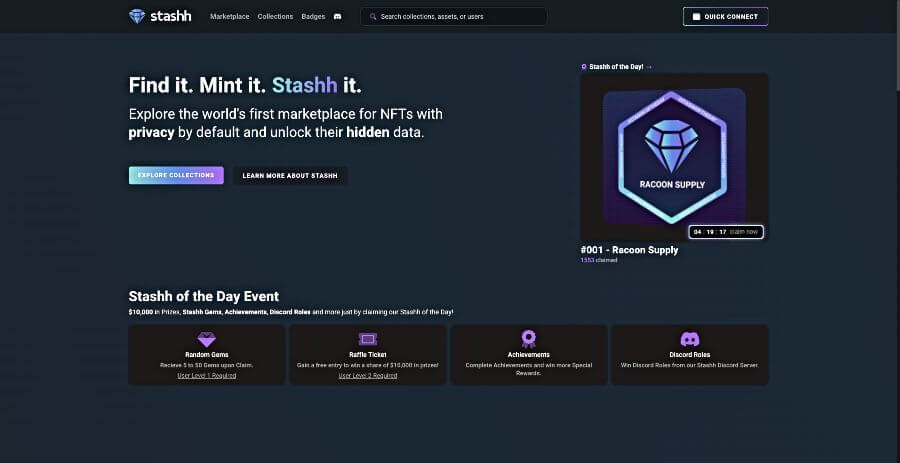
Known Origin
An Ethereum-based art NFT marketplace, Known Origin offers a wide variety of high quality works that are easily browsable. The collections on offer are highly curated, with artists having to apply to join, and applications capped at 500, making it very much a “traditional art gallery gone Web3” kind of deal.
To be able to buy and trade NFTs at Known Origin, you’ll need to connect one of the following crypto wallets:
- Portis
- Torus
- WalletConnect
- Fortmatic
- Coinbase Wallet
MakersPlace
An invite-only, art focused NFT platform, MakersPlace runs on Ethereum and claims to have a community of over 100,000 collectors. The platform’s art focus is underlined in their statement “we’re not computer nerds. We’re art nerds with computers” and is apparent in its design and layout.
Several handy ways to filter NFTs are available, including by both creator and collector, and categories (3D art, animation, education hub, generative, illustration, photography). You can sign-in to MakersPlace using a digital wallet like MetaMask, or via a third party app like Google or Civic.
Treasureland
A cross-chain NFT marketplace platform, Treasureland supports NFTs minted on ETH, BNB, BSCT, Polygon, Moonriver, IoTeX, Moonbeam, KCC, and EVMOS. It is a general marketplace, so anyone can join, create NFTs, and list them for sale. Although you can filter via collection, artist, and chain, this functionality is less nuanced than at many other marketplaces.
To get started with Treasureland, you’ll first need to connect one of the following crypto wallets:
- MetaMask
- WalletConnect
- Math Wallet
- Token Pocket
- ONTO Wallet
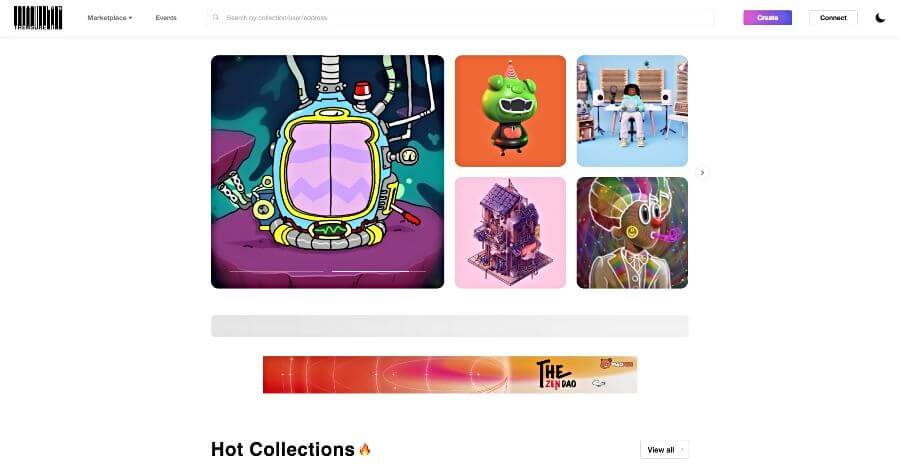
Objkt.com
This NFT marketplace breaks the mould in a couple of ways. First up, it’s based on the Tezos blockchain, and second it offers set price listings, and both English and Dutch type auctions. Although you can browse collections, search by tags, and filter by price and edition runs, there are no categories at such – instead you can filter by ‘Mime Type’, which are: Audio, Image, GIF, SVG, Model, Video, Interactive, PDF, and Text.
To get started on Objkt.com, first you’ll have to sync your preferred crypto wallet. The platform supports the following:
- Spire
- Temple Wallet (browser)
- Galleon
- Kukai Wallet
- Umami
- AirGap Wallet
- Autonomy
- Naan Wallet
- Temple Wallet (mobile)
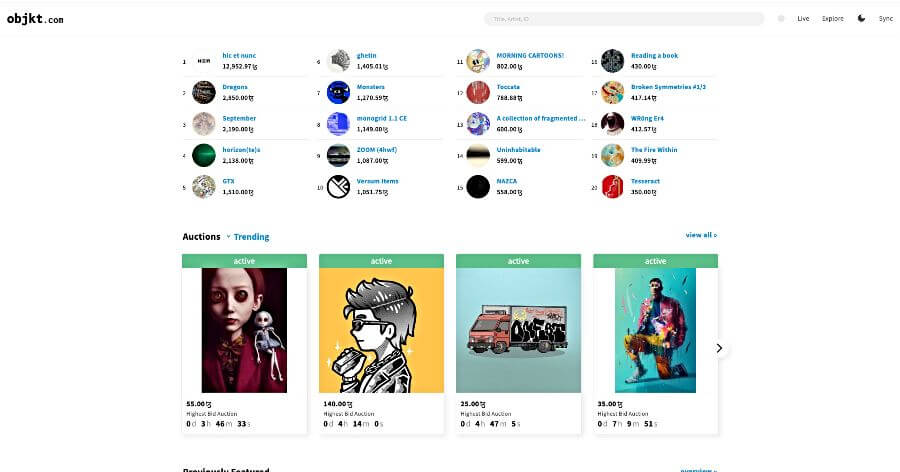
LooksRare
A community-focused Ethereum-based NFT marketplace, LooksRare offers plenty of art and collectible NFTs, but isn’t the easiest to explore due to a lack of effective filters. Before you can get started with LooksRare, you’ll need to connect one of the following cryptocurrency wallets:
- Rainbow
- Coinbase Wallet
- MetaMask
- WalletConnect
X2Y2
Yet another Ethereum-based NFT marketplace, is a clean and simple platform, but like LooksRare, it lacks the nuanced filters offered by bigger players. This means that, despite having hundreds of thousands of NFTs listed, it can be difficult to browse. To get started with X2Y2, you’ll need to connect one of the following crypto wallets:
- MetaMask
- Coinbase Wallet
- Fortmatic
- TokenPocket
- imToken
- MathWallet
- WalletConnect
- OneKey Wallet
- KitKeep
- Trust Wallet
- SafePal
- HyperPay
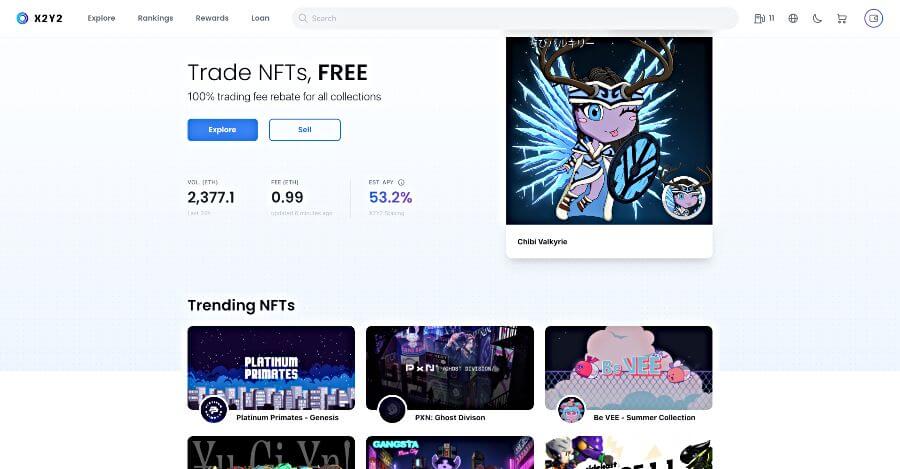
Liquidifty
Governed by a DAO (Decentralised Autonomous Organisation) which uses the LQT token, gaming-focused Liquidifty supports NFTs on BNB Chain, Ethereum, and Polygon. The Liquidifty Launchpad also gives users an easy and low-risk way to participate in IDO (Initial DEX Offerings). To get started on Liquidifty, you’ll need to connect one of the following crypto wallets:
- MetaMask
- Coinbase Wallet
- WalletConnect
tofuNFT
Previously branded as SCV’s NFT market, tofuNFT offers both an NFT marketplace and a Launchpad for IDO projects – making it similar to Liquidifty. The platform offers both fixed price and auction NFT listings, and supports the following blockchains:
- BNB Chain
- Ethereum
- Arbitrum
- Avalanche
- Polygon
- Astar
- Shiden
- Harmony
- Fantom
- Optimism
- Fuse
- Moonbeam
- Moonriver
- Boba
- Cronos
- Klaytn
- Aurora
- Telos
- Metis
- Celo
- Oasis Emerald
- Meter
- Heco
- OKExChain
- Evmos
- PlatON
- CLV P-Chain
- Arbitrum Nova
Before you can get started using tofuNFT, you’ll need to connect one of the following crypto wallets:
- MetaMask
- WalletConnect
- Coinbase Wallet
- Fortmatic
- Defi Wallet
- TokenPocket
- Trust Wallet
- imToken
- BSC Wallet
- SafePal
- MathWallet
- Huobi
AirNFTs
Built on BSC, FTM, and Polygon, AirNFTs is a simple to use NFT marketplace offering both fixed price and auction listings. Categories include games, art, photos, and music, and the search facilities are basic but functional. Interestingly, AirNFTs also gives users the option to stake AIRT within pools and farms.
To use AirNFTs, you’ll need to connect one of the following cryptocurrency wallets:
- MetaMask
- Trust Wallet
- Wallet Connect
- TokenPocket
- Coinbase Wallet
- BitKeep Wallet
- Coin98 Wallet
Refinable
Offering Ethereum, BSC, and Polygon based NFTs as auction and fixed-price listings, Refinable also allows users to search several other NFT metaverse platforms, including LooksRare, OpenSea, and X2Y2. To use Refinable, you’ll need to connect one of the following:
- MetaMask
- WalletConnect
- Native Browser
- Binance Chain Wallet
- Coinbase Wallet
Babylons
Pitching itself as the ultimate destination for NFT enthusiasts, DAO-governed Babylons is a very promising light in Web3. In addition to having a multichain NFT marketplace (Binance SC, Avalanche, Ethereum, Moonbeam and others), it will also offer gaming space, launchpad, and tooling.
Babylons can be connected to the following:
- WalletConnect
- Fortmatic
- Brave Wallet
NFT Laws and Regulations
Like with cryptocurrency, the laws and regulations regarding NFTs are in a state of flux globally, and aren’t always clear. However, as a whole, most countries seem to be regarding NFTs as a straightforward property asset – unlike cryptocurrencies.
At the time of writing, the big concern regarding NFTs and regulations emanated from the United States. There, the Securities and Exchange Commission (SEC) has hinted that it may decide to class Ethereum and most other cryptocurrencies, with the exception of Bitcoin, as securities. It has also claimed that because over 40% of Ethereum nodes are based in the United States, it considers all of Ethereum to be under US jurisdiction. Obviously, if the SEC does class Ethereum as a security and tries to assert its control over the entire Ethereum network, it could seriously disrupt the NFT ecosystem.
With so much changing so rapidly, it’s crucial for anyone involved with NFTs to keep up with all the latest news – luckily, we’ve got that covered.

